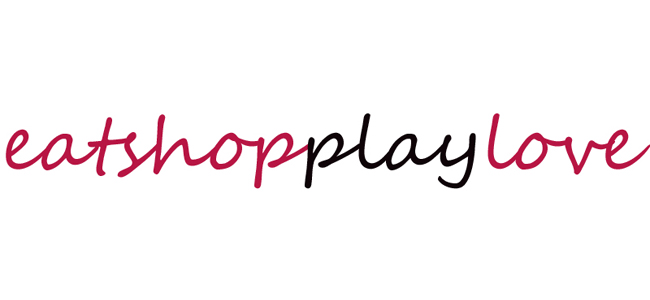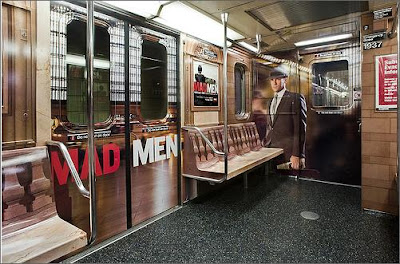The TV series Mad Man gives a wonderful glimpse into the busy and colorful world of American advertising. Lucky Strike, Volkswagen, Playtex, Heineken, Honda, Samsonite, Mountain Dew... Over the last four years, these famous brands were intriguingly depicted during valuable weekend screen time, and their TV product placements likely drew new customers and brought back some old ones.
Big brands aside, what do smaller players who cannot afford to hire Don Draper and Peggy do to attract new customers?
In New York, the probable answer for many is subway advertising.
The New York Metropolitan Transportation Authority (MTA) subway system is an intricate network that serves as the pulse of the city. Its fleet of 7,000 cars makes more than 8,000 weekly trips to 468 stations. On an average weekday, the subway ridership is about 5.2 million. The annual number is a whopping 1.6 billion. That is a LOT of eyeballs.
Considering the volume of traffic, advertising is within reach for many medium-sized businesses. Covering the platforms of 200 stations cost $40,000. Covering 25 percent of the interior ad spaces of a train costs $44,000. The digital subway-entrance ads are pricier: they cost a quarter million dollars for six ten-second spots every minute on the 80 digital displays in the city.
A classic Coke ad on a digital-subway ad display
For subway straphangers, one advertiser is particularly recognizable. For the last three decades, he has been dwelling in one out of every five subway cars, looking down at half-asleep New Yorkers in the morning and partygoers at night, his eyes boring into any person who might be remotely thinking of his or her less-than-perfect skin and giving the ad anything more than a passing glance. In fact, he is such a cultural quirk for the city that a local magazine once suggested that Hillary Clinton -- who, at the turn of the century, was running for the New York senate seat yet had never lived here -- prove her connection to the Empire State by answering a quiz question that only New Yorkers could answer, “Who is Dr. Zizmor?”
Dr. Zizmor subway ad circa 2010
In the ubiquitous ad, Dr. Jonathan Zizmor is dressed in a coat in front of a rainbow you might see in a Telly Tubby TV episode. Over the years, it has undergone multiple iterations. One version had before-and-after pictures of an actual patient with dramatic skin improvements on her face, accompanied by a brief letter that was labeled “actual.” Another had a drawing of a woman with many pockmarks on her face and a brief checklist for commuters to go through before calling Dr. Z, with assurance that he has insurance plans for almost all his patients. But regardless of the version, it makes me feel uncomfortable at many levels.
Dr. Zizmor subway ad circa 2006
Firstly, based on the mathematics discussed above on subway advertising, it must cost an arm and a leg for a doctor operating a clinic to be on 20 percent of all subway trains in the New York MTA. To me, to advertise a medical service would only mean that costs eventually get passed onto patients, not all of whom may be undergoing treatment for cosmetic reasons.
Secondly, I have always personally thought that professional services, including medical and legal ones, are best publicized by word of mouth following their effective work on previous client cases. Not by paying their way through advertisements.
Dr. Zizmore newspaper ad circa before-Una-Ragazza-was-born
Thirdly, the target audience appears to be young or middle-aged New York women, not pre-schoolers discovering primary colors and learning the alphabet (read: B-E-A-U-T-I-F-U-L C-L-E-A-R S-K-I-N). I’m willing to bet a microdermabrasion facial that investing in an ad designer could have potentially drawn in more customers.
Unfortunately, it appears the same creative designer may have worked on the television version of the ads.
Dr. Z may have the most memorable subway ad in the health care space, but it is not the only one. On the contrary, he is joined by many purveyors of health services.
In the land that gave birth to the self-help revolution, it is not surprising to see the School of Practical Philosophy in New York advertise heavily in the subway trains and platforms in advance of each winter (aka “la saison de la dépression”). For $90, it promises to teach you ways that will lead to freedom and happiness. Personally, I think keeping my $90 may make me happier, but while philosophy is not my cup of tea, I have to admit that its ads are aesthetically more pleasing and thought provoking.
Apparently, not everybody agrees with the message in the poster
Thankfully, to counterbalance the bombardment of calls to open our wallets, the MTA subway also generates some pubic service ads, often time with worthy messages. As flu season approaches, it is not uncommon to see more “Feeling Under the Weather?” ads popping up over our heads, advising sick passengers to head home. (I wonder how many employees have cited those ads as a reason for not showing up to work.)

Now, what about those who cannot afford subway advertising?
For that, you may want to turn to Big Al for advice. The guy has been busy sending faxes to offices all around town, touting his Couch Potato Diet Plan. I just happened to be standing by the department’s fax machine when his ad slowly buzzed through. I quickly removed it to avoid any potential clients walking by and seeing Big Al’s “patient.” For the rest of that day, I was emotionally disturbed that a company would actually think of sending such inappropriate advertising to reputable corporations, and during regular business hours to boot.
Big Al's Couch Potato Diet Plan
That evening when I got home, I decided to find out more about this diet company and listen to the personal success stories of women who have tried the product, as urged in the fax.
Dialing the toll-free hotline, I was greeted by a brief recording which announced that the call was being transferred. There was a soft click and then more ringing. Three seconds later, an unhappy sounding voice -- which I assumed belonged to Al -- boomed, “Hello?... Hello?”
While he was greeted with silence from my muted phone, I heard a baby gurgle on his end of the line. After waiting for what seemed a very long period of 25 seconds, he hung up.
Ah. Perhaps Al Junior was the result of his father’s special diet, which gave Mom a “nice body” and “a little romance,” as advertised.
For the little tyke’s sake, I sure hope that at least a few people would call the 1-800 number and enquire about the miracle product. Otherwise, I may just call again myself and suggest the $90 happiness class on philosophy.
A Snickers subway ad paying tribute to the resident doctor in subterranean New York


















Dr. Z was indicted for insurance fraud a while back. Apparently he was doing facials and charging patients insurance company as if it was a medical procedure.
ReplyDeleteanonymous - so i've heard. i'm curious who his clients/patients are. if anybody knows someone who has seen him, ping me and i might do a follow-up story.
ReplyDelete